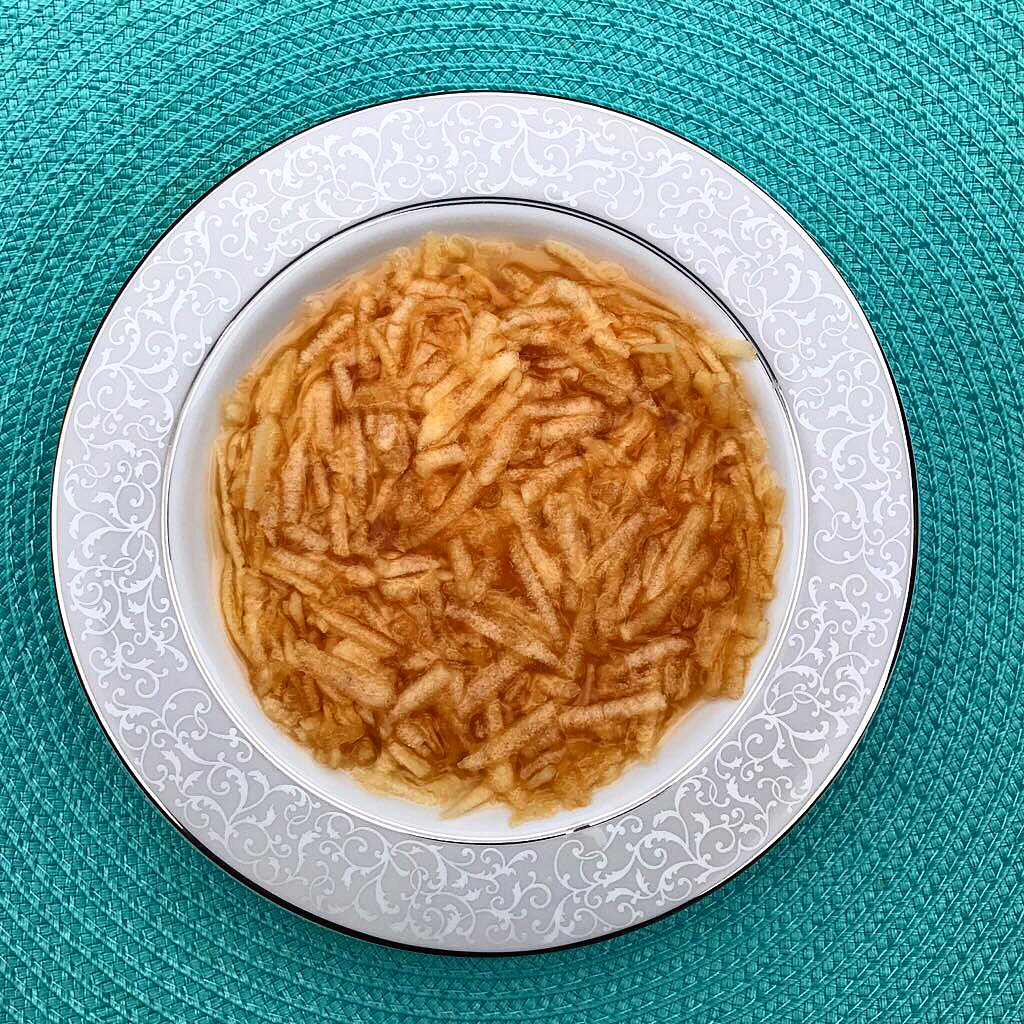A Gravlax Recipe That Arrived by Mail
Shared by Devra Ferst
Recipe Roots: Philadelphia > Wilmington, Delaware > Brooklyn, NY
Gravlax, or salmon that’s cured in salt and sugar, is classically from Scandinavia, but some American Ashkenazi cooks adopted the dish as their own during the 20th century. That was true for Devra Ferst’s maternal grandmother Marjorie Balick (called Grammy in the family), who passed along her recipes and cooking wisdom to Devra through a series of letters.
The first of many recipe cards she received was for her grandmother’s gravlax, a family staple, always requested for holidays and visits, and served with pumpernickel bread or buttery Ritz crackers. With the recipe arrived a note of grandmotherly encouragement: “Every chef in New York makes it somewhat differently, so don’t get upset if you read, or learn, another way to make this.” Over the years, Devra has tried out different variations, adding juniper berries to the recipe and a touch more sugar.
When Marjorie passed away in 2014, Devra inherited her metal shoe-box-sized recipe card box. “It also has cards with funny household tips,” she says, like “‘If you scratch a piece of wood, mix instant coffee and water or oil into a rag and rub it over the scratch.’ My grandfather owned a furniture store, so I imagine that one came in handy.”
Towards the front of the box, Devra came across a card for a gravlax recipe with her other grandmother, Elaine Ferst’s name on it. “I laughed when I first saw it. Was the famous family gravlax originally my other grandmother’s recipe?” Devra asked her father, Walter Ferst who jokingly explained, “Yes, it was my mother’s recipe, Grammy just made it better.”
The salmon, which stands in well for lox or Nova (though its flavor is more delicate), is excellent year round, but a perfect choice for Yom Kippur break fast as it doesn’t require any day-of cooking. Just make sure to start the curing process early enough and to buy the freshest fish possible.
Juniper-Cured Gravlax
Photo by Dave Katz
Recipe adapted from Marjorie Balick
Makes: 1 pound
Time: 15 minutes, plus 36 hours curing time
Ingredients
One 1½-pound salmon filet, cut from the thick end
⅔ cup granulated sugar
⅓ cup kosher salt
1 tablespoon dried juniper berries, toasted and crushed
1 teaspoon freshly ground black pepper
1 bunch (4 ounces) dill
Preparation
1. Place the fish, skin side up, on a cutting board and slice four long, but shallow cuts through the skin.
2. Combine the salt, sugar, juniper berries and pepper in a bowl and mix together.
3. Prepare a rimmed baking sheet by covering it with half of the dill, stalks included. Coat the skin side of fish with one-third of the salt and sugar mixture and place the fish, skin-side down, over the dill.
4. Coat the flesh of the fish with another third of the salt mixture, then top with the remaining dill sprigs. Reserve the remaining salt mix.
5. Wrap tightly with plastic wrap and place a heavy pan on the wrapped fish to weigh it down. Refrigerate for 24 hours.
6. The next day, remove the fish from refrigerator, pull back the dill sprigs on the top and baste the fish in the juices that have accumulated. Sprinkle the top with the remaining salt mixture and return dill sprigs over the salmon. Wrap the tray in plastic and place the heavy pan back over top. Return the salmon to the refrigerator for another 12 hours.
7. After the 12 hours, remove the fish and rinse off the salt mixture with cool water, discarding the dill. Dry the salmon thoroughly with paper towels. Thinly slice and serve or wrap tightly in plastic wrap and keep in the refrigerator for up to 1 week.






